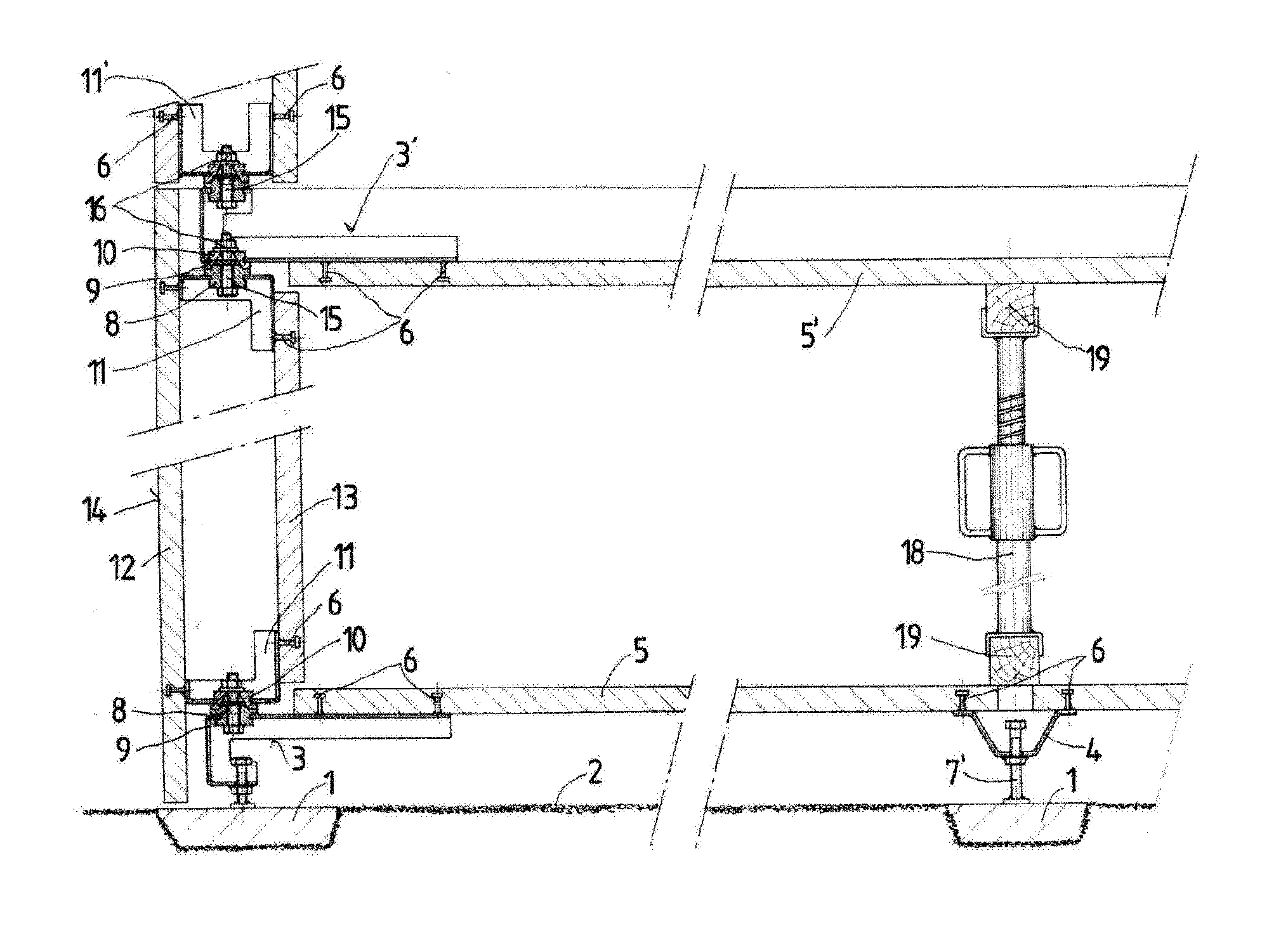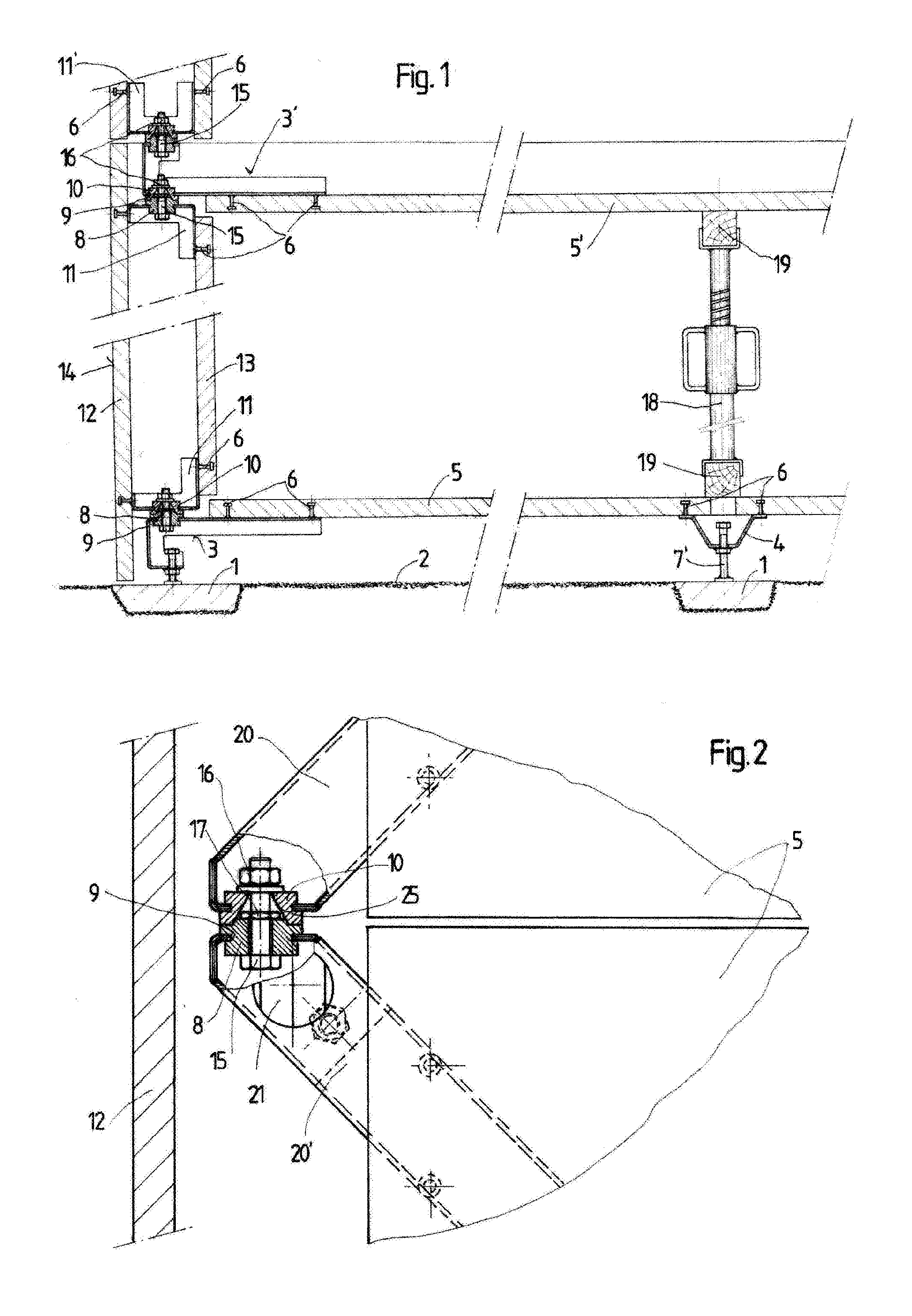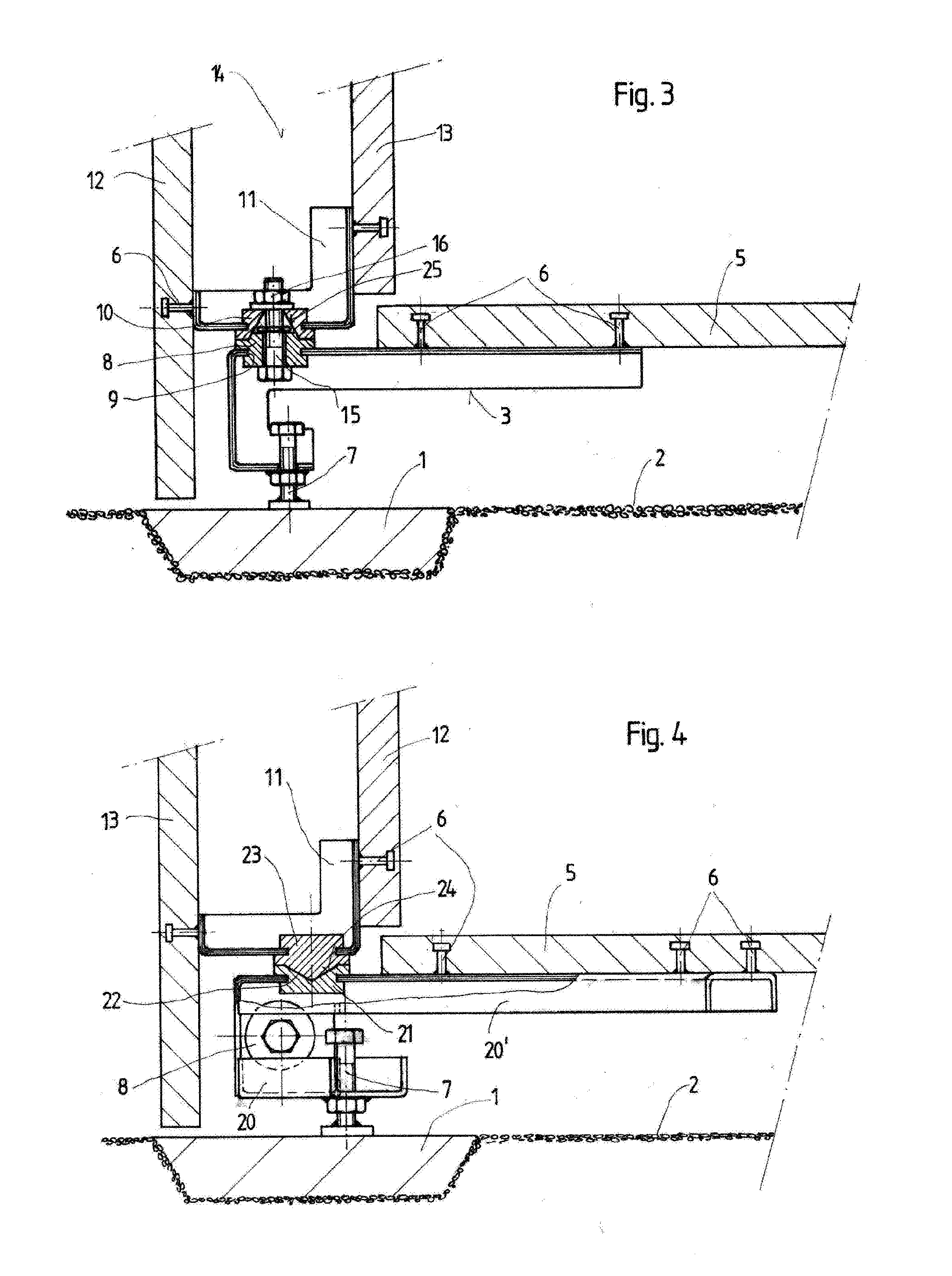Method for producing prefabricated structural parts
a technology of structural components and prefabricated parts, which is applied in the direction of walls, building components, constructions, etc., can solve the problems of high cost and effort, inability to precisely produce the bottom plate, and difficulty in alignment of structural components on construction sites, so as to achieve easy and reliable attachment and easy attachment to other structural components
- Summary
- Abstract
- Description
- Claims
- Application Information
AI Technical Summary
Benefits of technology
Problems solved by technology
Method used
Image
Examples
Embodiment Construction
[0006]The object of this invention is to avoid these disadvantages and to propose a method of the type described above where prefabricated structural components can be produced that do not have a construction joint between the bottom plate and the wall plate, that enables a precise bottom plate to be produced where no essential prior work procedures are required to produce the bottom plate, and where simple installation of the produced structural components is made possible at the construction site, thereby significantly reducing the cost of erecting the prefabricated-component building and significantly enhancing the quality of construction.
[0007]This is achieved according to the invention in a method of the type mentioned above by the characterizing features of claim 1.
[0008]Shaping the parts is done after the mounting fittings have been installed in the plates or double-walled plates under controlled workshop conditions so as to ensure a corresponding precision for the parts. Aft...
PUM
| Property | Measurement | Unit |
|---|---|---|
| hardenable | aaaaa | aaaaa |
| dimensions | aaaaa | aaaaa |
| height | aaaaa | aaaaa |
Abstract
Description
Claims
Application Information
 Login to View More
Login to View More - R&D
- Intellectual Property
- Life Sciences
- Materials
- Tech Scout
- Unparalleled Data Quality
- Higher Quality Content
- 60% Fewer Hallucinations
Browse by: Latest US Patents, China's latest patents, Technical Efficacy Thesaurus, Application Domain, Technology Topic, Popular Technical Reports.
© 2025 PatSnap. All rights reserved.Legal|Privacy policy|Modern Slavery Act Transparency Statement|Sitemap|About US| Contact US: help@patsnap.com



